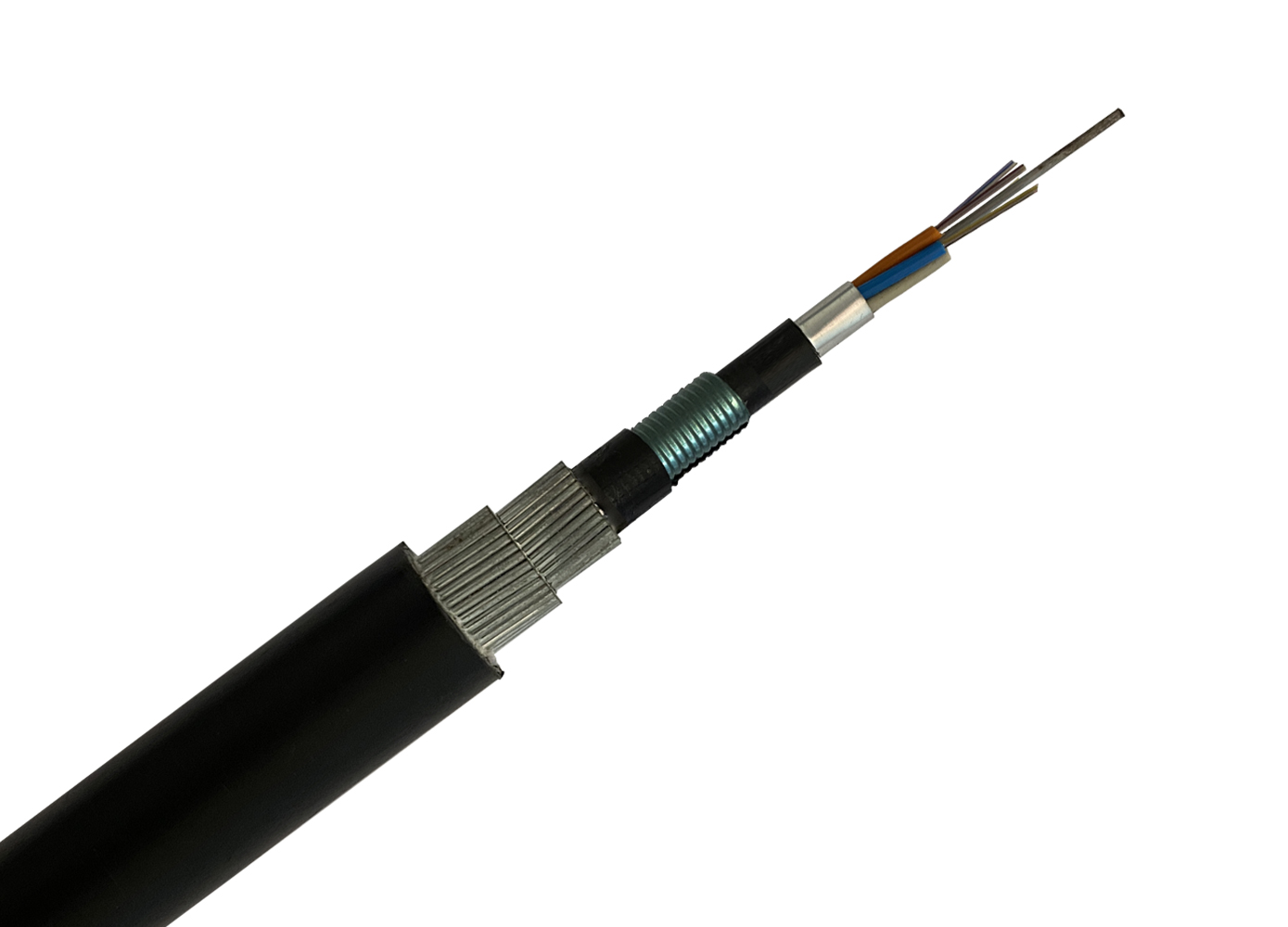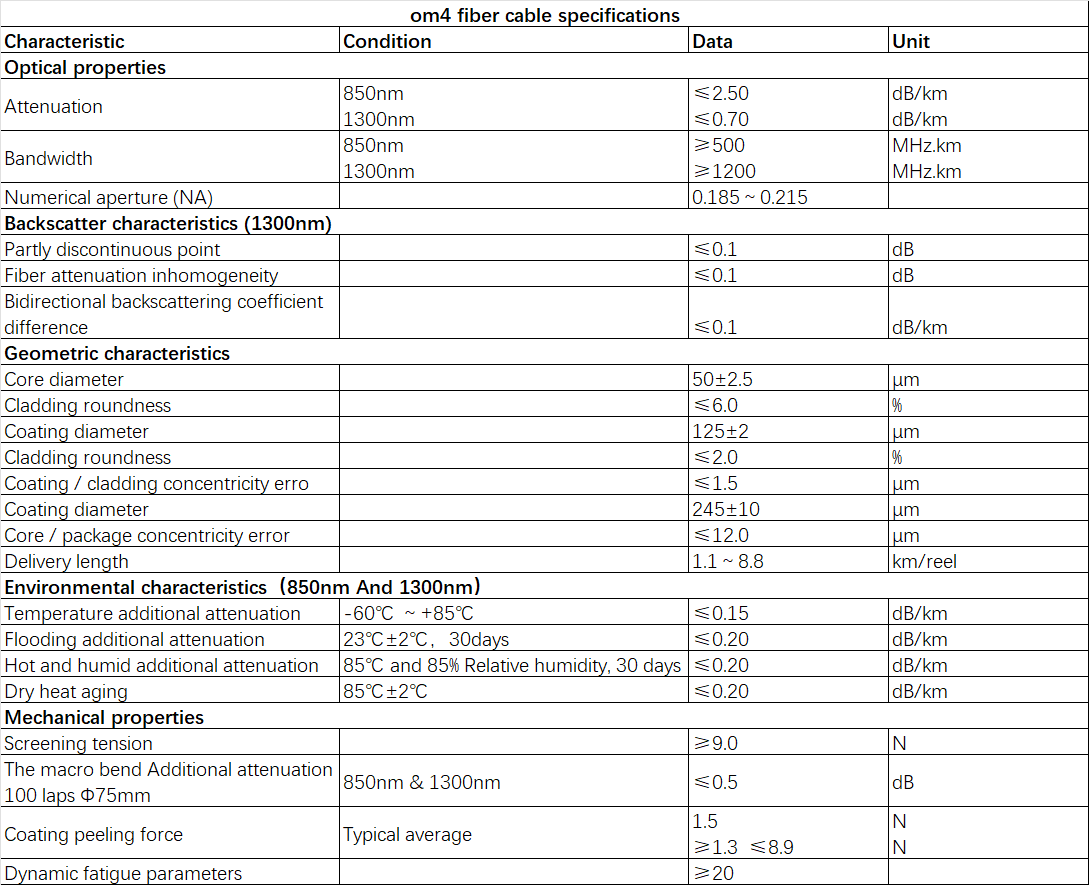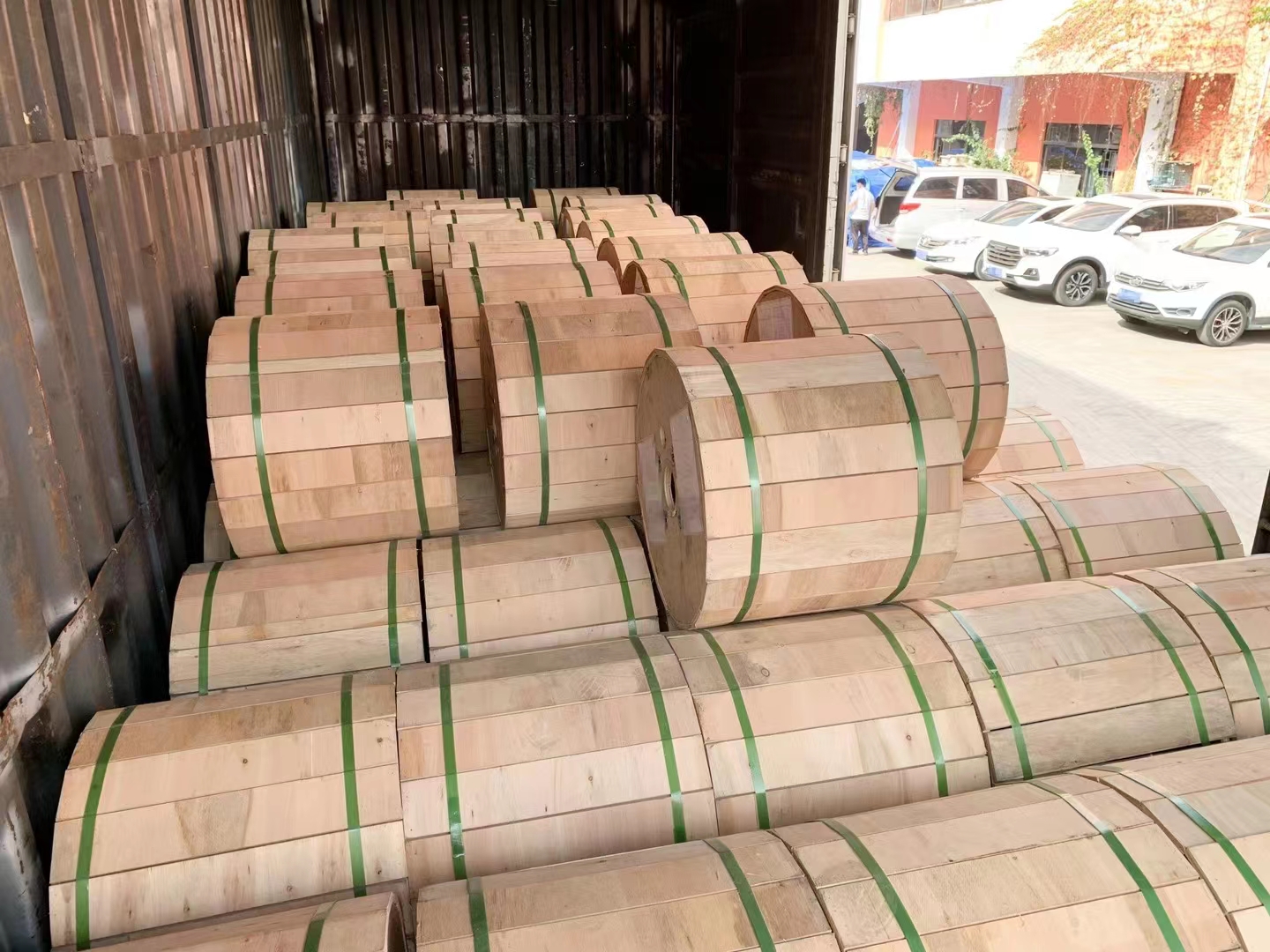
The single-mode or multi-mode optical fiber is inserted into a loose tube made of high-modulus polyester material. The tube is filled with a waterproof compound; the center of the cable core is a metal strengthening core. For optical cables with certain core numbers, , a layer of polyethylene (PE) needs to be extruded outside the metal reinforced core. The loose tube (and filler rope) is twisted around the central strengthening core into a compact circular cable core, and the gaps in the cable core are filled with water-blocking filler. The plastic-coated aluminum strip (APL) is longitudinally wrapped and then extruded with a polyethylene inner sheath. The double-sided chrome-plated plastic-coated steel strip (PSP) is longitudinally wrapped and then extruded with a polyethylene outer sheath. After being armored with double layers of fine round steel wire, the cable is finally extruded into a polyethylene outer sheath.
Application:Directly buried, steep slopes, underwater
Temperature Range:Storage and operation::-40C ~ +70C;Erection:-15C ~ +60C
Bend radius:Static 10 times the cable diameter,Dynamic 20 times optical cable diameter
YD/T 901-2009 Layer-twisted outdoor optical cable for communications; IEC 60794-1-1-2011 Optical cable Part 1-1
Fiber Type:G652D;G655C;G657A1;G657A2;50/125;62.5/125;OM3-150;OM3-300;OM4 As Options

1、Double thin round steel wire armor makes the optical cable have stronger tensile performance.
2、Has good mechanical properties and temperature characteristics
3、The loose tube material itself has good hydrolysis resistance and high strength. The tube is filled with special grease to provide critical protection for the optical fiber.
4、Good pressure resistance and softness
5、Take the following measures to ensure the waterproof performance of optical cables:
6、Single steel wire center strengthening core
7、The loose tube is filled with special waterproof compound
8、Complete cable core filling
9、Good water-blocking materials prevent longitudinal water seepage of optical cables
10、Plastic coated aluminum strip (APL) moisture-proof layer
11、Double-sided chrome-plated plastic-coated steel strip (PSP) improves the moisture resistance of optical cables


layout
The ship keeps moving forward, and then uses the underwater robot to dig a ditch and put the optical cable in. Then the underwater robot washes back the sand and covers the optical cable, and then keeps moving forward. When it needs to be connected, it is completed first on the ship, and then Seal before proceeding with laying. The current submarine optical cables are all optical fiber. There are very few cables. And all the ones currently laid are buried in the soil. They use underwater robots to dig a trench and then put it in and bury it in the soil.
The underwater robot actually uses a high-pressure water pump to pressurize the water to a very high pressure and spray it out, thereby rushing out of the trench. As for maintenance, there is no maintenance at all. Maintenance is usually not required. You only need to regularly inspect whether the optical cable is exposed with an underwater robot, and if so, cover it with sediment. In addition, if it is broken, you can use an attenuation detector to measure it to get the specific location. Then go there, fish it up, and connect it or other methods. Usually, you will cut off the entire damaged section and replace it with a new one.
Material
The structure of the submarine optical cable needs to be strong and the material is light, but the light metal aluminum cannot be used, because aluminum and seawater will undergo an electrochemical reaction to produce hydrogen, and the hydrogen molecules will diffuse into the glass material of the optical fiber, causing the loss of the optical fiber to increase. Therefore, submarine optical cables must not only prevent hydrogen from being generated internally, but also prevent hydrogen from penetrating into the optical cable from the outside. For this reason, in the early 1990s, a carbon-coated or titanium-coated optical fiber was developed that can prevent hydrogen penetration and prevent chemical corrosion. Optical fiber connectors are also required to be high-strength, requiring the connection to maintain the strength of the original optical fiber and the surface of the original optical fiber from being damaged.
Typical structure
Structural analysis of submarine optical cables. The structure of deep-sea optical cables is relatively complex: the optical fiber is placed in a U-shaped groove plastic skeleton, and the groove is filled with grease or elastic plastic to form the fiber core. The fiber core is wrapped with high-strength steel wire. During the wrapping process, all gaps should be filled with waterproof materials. Then a layer of copper tape should be wrapped around the steel wire and the seams should be welded to form an anti-corrosion barrier between the steel wire and the copper tube. A combination of compression and tension. A layer of polyethylene sheathing is also added to the outside of the steel wire and copper pipe. This tight multi-layer structure is to protect the optical fiber, prevent breakage and prevent seawater intrusion. In areas where sharks are present, a polyethylene sheath is added to the outside of the submarine cable.
Design requirements
The design of submarine optical cable must ensure that the optical fiber is not affected by external forces and the environment. Its basic requirements are: it can adapt to submarine pressure, wear, corrosion, biological and other environments; it has a suitable armor layer to prevent damage from fishing trawls, anchors and sharks; when the optical cable breaks , minimize the length of seawater penetrating into the optical cable; can prevent hydrogen from penetrating into the optical cable from the outside and hydrogen generated internally; has a low-resistance remote power supply circuit; can withstand the tension during laying and recycling; general requirements for service life Over 25 years.
Deep-sea (depth above 1,000 meters) submarine optical cables adopt a non-steel wire armored structure, but the structure and reinforcing components of the optical cable core (generally the central steel wire) must be able to protect the optical fiber to prevent the high pressure of seawater and high stress during laying and recycling. tension. In order to prevent shark damage, two layers of steel tape should be spirally wrapped around the sheath of deep-sea optical cables in shark-infested waters, and a layer of polyethylene outer sheath should be squeezed.
The core structure of submarine optical cables in shallow seas (water depths within 1,000 meters) is the same as that of deep-sea optical cables, but shallow-sea optical cables must have single or double layers of steel wire armor. The number of armor layers and the outer diameter of the steel wire are determined according to the submarine environment of the submarine cable route, water depth, whether it can be buried, fishing, etc.
Note: The structure’s size and specifications can be desianed according to customer requirements
